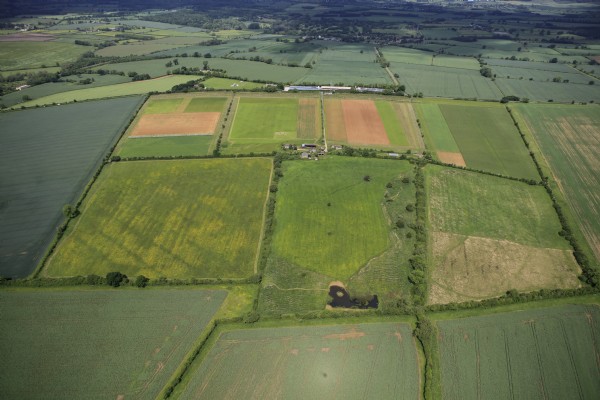

It’s always been part of my vision to have a farm as an extension of the Cotswold Seeds business and last year we bought Honeydale Farm, one hundred acres in the Cotswolds. During the past 12 months we’ve been observing and taking baseline assessments on the land prior to making any changes and we’ve been keeping a monthly blog to record it all, which we’d now like to share with our friends in the farming world.
A crucial part of our work at Cotswold Seeds is to show how deep rooting leguminous plants and innovative seed mixtures can be used for the benefit, profit and viability of farms through improving soil structure and fertility and our plans for Honeydale very much reflect this. It’s a long term project but our ultimate aim is to provide a centre for increasing and sharing knowledge by using the farm as an information bridge.
We’ve been keeping a blog to record what’s happened over the first year - here are just some of the highlights:
October 2013: The farm was being sold at auction by Tayler and Fletcher at the Fosse Manor Hotel just down the road. I went with my son Jack and though Matthew White, our land agent, took charge of the bidding for us, it was all very nerve-wracking. When the hammer fell, I remember feeling such mixed emotions, excitement coupled with anxiety and panic, a sense of the ground opening up. The next morning we received lots of phone calls from neighbouring farmers who’d found out overnight that ours was the successful bid. They were so supportive and happy for us that it made the stress of it all worthwhile. As did walking round the fields and paddocks that first time, knowing it was ours and starting to plan how best to use it.
November: The first thing we needed to do was find a tenant, ideally someone with a farming background who could live on the land and help look after it. Sam Lane was working at the local Swinbrook estate and was looking for a place to live near by. He moved into the cottage in November, we got talking, and now he’s joined our team as technical advisor. It’s great how things work out sometimes.
March: In order to be able to make a baseline assessment of the soil health so that we can monitor any changes, we took a soil sample from all seven fields, collecting in the classic ‘W’ pattern and sent if off to the NRM soil testing lab. P & K levels seem fine and we didn’t want to apply fertilisers or manures this year because want to observe how the crops fare at this benchmark level before we start making any changes.
April: The first lambs arrived at Honeydale to graze two of the three grass fields.
May: We employed a firm to construct and fit out the polytunnel and then we planted sainfoin, a plant we are very passionate about at Cotswold Seeds and with which we have a strong history. Meanwhile Jodey Peyton and Richard Broughton both work at the CEH (Centre for Ecology and Hydrology) and are the government’s expert advisors on birds and insects. They came to Honeydale to conduct baseline surveys, to record the wildlife on the land before we start to make changes.
July: Definitely the most important events that have taken place on the farm over the past few weeks has been the haymaking in July and combining the barley earlier this month. This means that the 12 month baseline cycle we have been following in order to observe the established practices on the farm before deciding what changes to make is now complete. What’s particularly important about the barley for us is that it has only been in the ground for four and a half months. During the rest of the year the pattern has been for this field to be left as stubble. While this is an established and low input method of farming it means that the soil has been left inactive for nearly three quarters of the year and this is something we’re going to change. We’re planning to grow as much green matter as possible, to try and improve the thin brashy soil and produce greater quantities of food.
2015 has started with tree-planting, putting up bird-boxes and a ‘Natural’ flood management project.
Follow the Honeydale blog at http://cotswoldhoneydale.blogspot.co.uk
Date Posted: 26th February 2015



